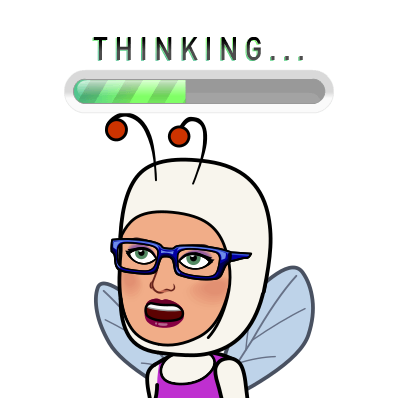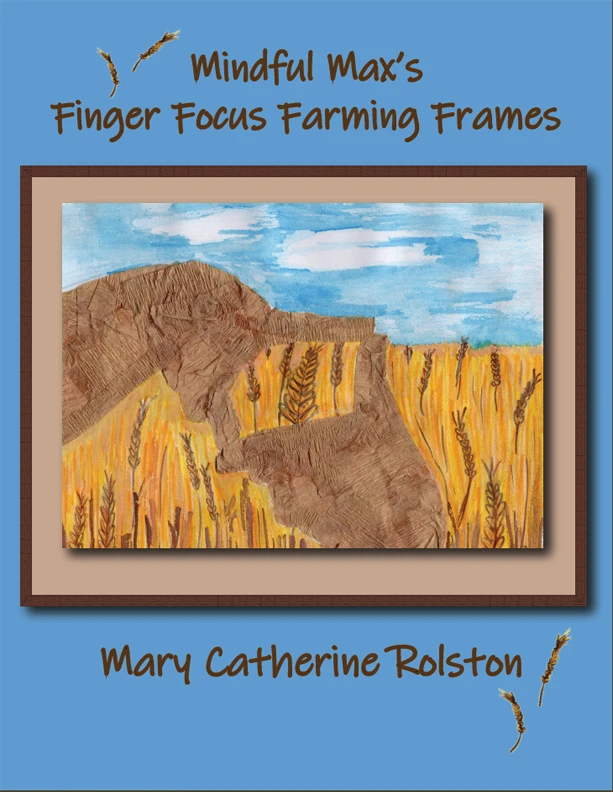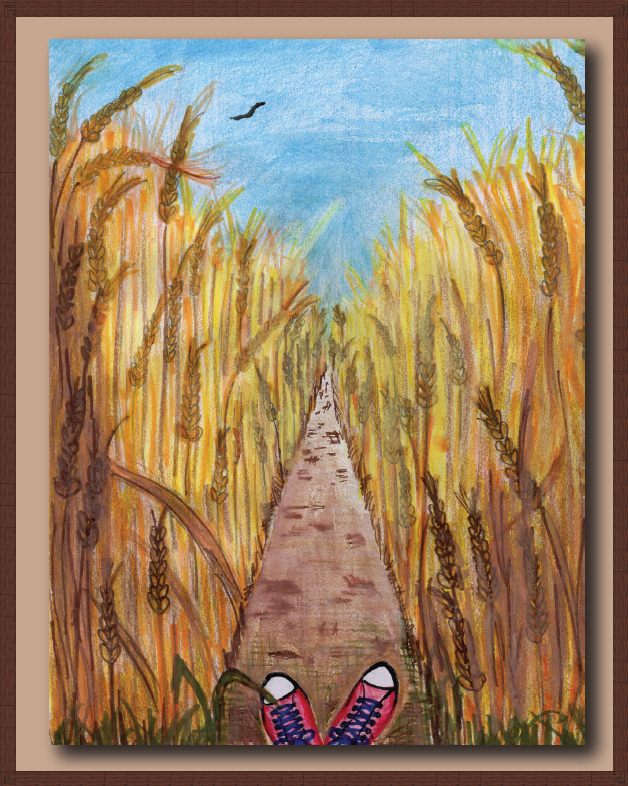Mindful Max’s Farming-Focus Finger-Frames
Max, Ma, and Pa comprise a Canadian prairie family. Max fills the day purposefully meandering on the family farm. As Max engages in gender-specific and generic activities, Max mindfully finger-frames scenes, objects of interest and points of pride. Since pronouns are not used the reader is never sure of Max’s gender, celebrating gender neutrality. In the afternoon, the family is faced with a typical summer prairie threat. By the day’s end, the family finds serenity.
Available at:
Inspiration for the Story
One February afternoon in 2021, I was heading out for my daily walk to discover our new neighbourhood in Comox, B.C., when I spotted Maxine’s big wave and warm smile. That day I was feeling a touch shy, (Yes, you might not believe it, but I can have those shy and reserved moments) but something told me this lady was special. Over the past months, I’ve learned how Max’s (her preferred name) optimism and resilience have kept her buoyant through her remarkable life as a Saskatchewan farmer, competitive curler, university graduate as a mature student, airline and airport customer service executive, travel agent, golfer, wife, widow, mother, grandmother, great-grandmother, daughter, sister, and steadfast friend. No matter the life challenge, Max passionately believes that we all can choose our attitude which in turn affects our outcomes. She continually chooses to smile, frame circumstances optimistically, and “get ‘er done”.

About the Illustrator
When I drove across Canada with Andrew, our youngest son, I fell in love with the stunning bold azure skies and flat golden land of the prairies. I call the prairies, Canada’s yoga mat. It was one of most peaceful and meditative sections of our drive.
Illustrations were birthed from combining Max’s life experiences and my fond reflections of the Canada’s yoga mat. Upon completion of the story, I could see illustrations in my head. Tentatively, I began to wade in with acrylic paints, but quickly realized that this medium would not work, so I took a deep breath and deferred to pencil crayons, watercolour paints, brush markers and collage. When I struggled depicting scenes due to my amateur skill, I chose to focus on what I could draw in a scene. Then came the repeated consistent images of hands which were a point of frustration. Hence, with the suggestion from Leslie, I collaged them with beige crepe paper. As the saying goes, “Where there’s a will there’s a way!” Are these illustrations professional? No. Yet, I am proud to say they reflect the optimistic determination, tenacity and resilience that Max exudes.
Thank you, Max, for the inspiration!
Guide for Reading: PRC
Predictions, Reflections and Connections
Predictions
Predicting is an essential tool when developing as a strong reader. This story has been written to hook the young audience in engaging in predictable events.


Reflections
Reflecting throughout a book makes the story extra personal and come alive. It reflects a reader’s level of comprehension. A more thoughtful and complex reflection and connection reveal a higher understanding of the story. They also help reinforce one’s memory sequence which forms the basis of a retelling with more detail and reference to nuance. A simple and literal retelling reflects a more simplistic understanding.
Connections
Making connections facilitates a deeper understanding of a story through making inferences, noting details and relating them to prior information. It is seeing, linking, and articulating other topics and events to the story. The reader is applying this reading experience to other learned information. Often when making connections the reader will arrive at exciting new insights that extend beyond the literal story.

Additional Resources
Gender-friendly articles for Parents & Educators
- https://www.edcan.ca/articles/gender-friendly-classroom/
- https://www.todaysparent.com/kids/school-age/young-children-need-to-learn-gender-identity/
- https://www.npr.org/2021/06/02/996319297/gender-identity-pronouns-expression-guide-lgbtq
- https://time.com/4327915/gender-neutral-pronouns/https://www.bbc.com/news/magazine-34901704
Power of Names
- https://www.newscientist.com/article/2169622-how-your-name-shapes-what-other-people-think-of-your-personality/
- https://nypost.com/2018/03/21/why-gender-neutral-baby-names-are-on-the-rise/
- https://www.goodhousekeeping.com/life/parenting/a31401884/gender-neutral-baby-names/
- https://www.entitymag.com/gender-neutral-name-woman-leads-to-success/



